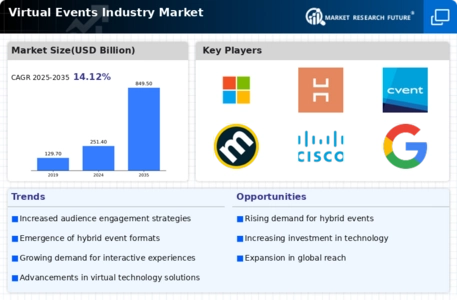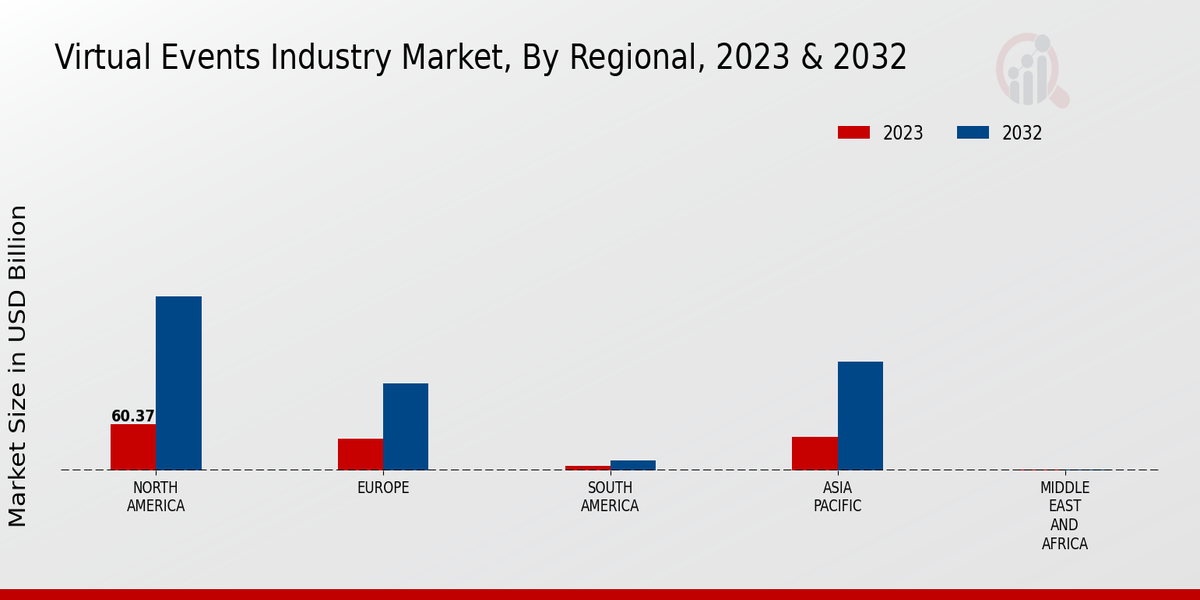Cost Efficiency
Cost efficiency is a pivotal driver for the Global Virtual Events Industry Market. Organizations are increasingly recognizing the financial benefits of hosting virtual events compared to traditional in-person gatherings. Expenses related to travel, accommodation, and venue rentals are significantly reduced, allowing companies to allocate resources more effectively. This shift is particularly advantageous for small and medium-sized enterprises that may have limited budgets. As the market continues to expand, the emphasis on cost-effective solutions is expected to attract more participants and stakeholders, further propelling growth in the sector.
Diverse Event Formats
The Global Virtual Events Industry Market is characterized by a growing diversity in event formats. From webinars and conferences to trade shows and networking events, the variety of options available caters to different audience preferences and organizational needs. This flexibility allows businesses to tailor their events to specific goals, enhancing engagement and participation. As the market evolves, the introduction of hybrid models that combine in-person and virtual elements is likely to gain traction, further expanding the reach and impact of events. This diversification is expected to play a crucial role in sustaining market growth.
Sustainability Initiatives
Sustainability initiatives are becoming increasingly relevant within the Global Virtual Events Industry Market. As organizations strive to reduce their carbon footprints, virtual events present an environmentally friendly alternative to traditional gatherings. By minimizing travel and resource consumption, companies can align their operations with sustainability goals. This trend is not only appealing to environmentally conscious consumers but also enhances brand reputation. As more businesses adopt sustainable practices, the virtual events market is likely to experience a surge in demand, contributing to its anticipated growth trajectory over the coming years.
Technological Advancements
The Global Virtual Events Industry Market appears to be significantly influenced by rapid technological advancements. Innovations in virtual reality, augmented reality, and artificial intelligence are enhancing user experiences, making events more immersive and engaging. For instance, platforms are now integrating AI-driven analytics to tailor content to audience preferences, thereby increasing participation rates. As technology continues to evolve, it is likely that the market will witness an influx of new tools and features that facilitate seamless interactions. This trend is expected to contribute to the projected market growth from 251.4 USD Billion in 2024 to 849.5 USD Billion by 2035.
Increased Global Connectivity
The Global Virtual Events Industry Market is likely benefiting from the rise in global connectivity. With the proliferation of high-speed internet and mobile devices, individuals from diverse geographical locations can participate in events without the constraints of travel. This accessibility not only broadens the audience base but also fosters inclusivity, allowing organizations to reach previously untapped markets. As a result, the market is poised for growth, with a projected compound annual growth rate of 11.71% from 2025 to 2035. The ability to connect with a global audience is becoming a key driver for businesses seeking to maximize their outreach.

























Leave a Comment